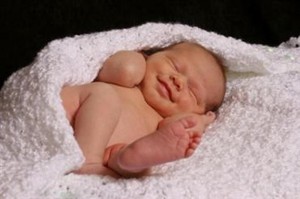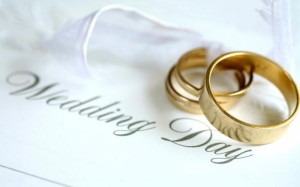
By Susan Gately - 03 May, 2014
The CSO has released a series of annual reports on marriages, births and deaths in Ireland from 1864 to 1886 and from 1922 to 2000 inclusive.
 In relation to births, these have fallen from 136,414 births in 1864 which represented 24 per 1,000 of the population, to 58,849 registered births or 18.6 per 1,000 in 1922.
In relation to births, these have fallen from 136,414 births in 1864 which represented 24 per 1,000 of the population, to 58,849 registered births or 18.6 per 1,000 in 1922.
The numbers rose in 1964 to 64,072 (22.5 per 1,000 of the population) and in 2011, the latest year for which figures are available, there were 74,033 live births in Ireland (this was 16.2 per 1,000 of the population).
In 1864, just 3.8% of births were outside of marriage, but by 2011, the number of births outside of marriage/civil partnerships represented over one-third or 33.9% (25,091) of all live births.
The ratio of boys to girls has remained stable.
In relation to marriage, there were 27,406 marriages entered into in 1864 while 15,141 marriages were registered in the Irish Free Sate in 1922.
There were 16,128 marriages registered in 1964 and by 2011 this had climbed to 19,855.
“Overall however the marriage rate per 1,000 of the population has remained remarkably consistent since 1864 when it was 4.8.
The rate was also 4.8 in 1922 while rising to 5.7 in 1964 and decreasing to 4.3 in 2011,” says the CSO statement.
Justice Minister Alan Shatter has commented that marriage in Ireland is in robust good health because more people are getting married than ever.
However, this view is not held by David Quinn, director of the Iona Institute who argues that the marriage rate in Ireland has traditionally been low by international standards, although it rose in the 1960s and 1970s.

David Quinn, Director Iona Institute
“Some of the reports published by the CSO show our marriage rate compared with the marriage rate in Northern Ireland, in England and Wales and in Scotland.
The 1973 report does this for example. It shows that in 1964, when our rate was 5.6 marriages per 1,000 of the population, it was 7.3 in Northern Ireland, 7.5 in England and Wales and 7.7 Scotland.”
By 1973 our marriage rate had “more or less” caught up with our neighbours.
Now the marriage rate in Ireland is the same as the European average, says Mr Quinn, “because the marriage rate almost everywhere has plunged to our low level.”
Referring to Minister Shatter’s view that more people are getting married than ever, Mr Quinn says this is because the Irish population has grown so much.
“In fact, our marriage rate is low, and except for a relatively short period, it has been low for over 150 years,” he says.
 In relation to the ages at which people got married, the CSO figures reveal that there were 1,032 males that were under 21 years when they married in 1864, but almost 5 times as many females (4,976) were under 21 when they married.
In relation to the ages at which people got married, the CSO figures reveal that there were 1,032 males that were under 21 years when they married in 1864, but almost 5 times as many females (4,976) were under 21 when they married.
Although the Marriage Registers in 1864 contained a column to insert the age of each person on marriage, it was sufficient to state if the parties were “of full age” or a “minor”.
Of the 54,812 persons married that year, some 24,352 (10,574 men and 13,778 women) signed the register with marks suggesting the absence of an elementary education.
By 1922 over 97% of husbands and 98% of wives signed the marriage register or certificate; the remainder made a mark. In 10% of marriages that year, one or both of the contracting parties had been married previously.